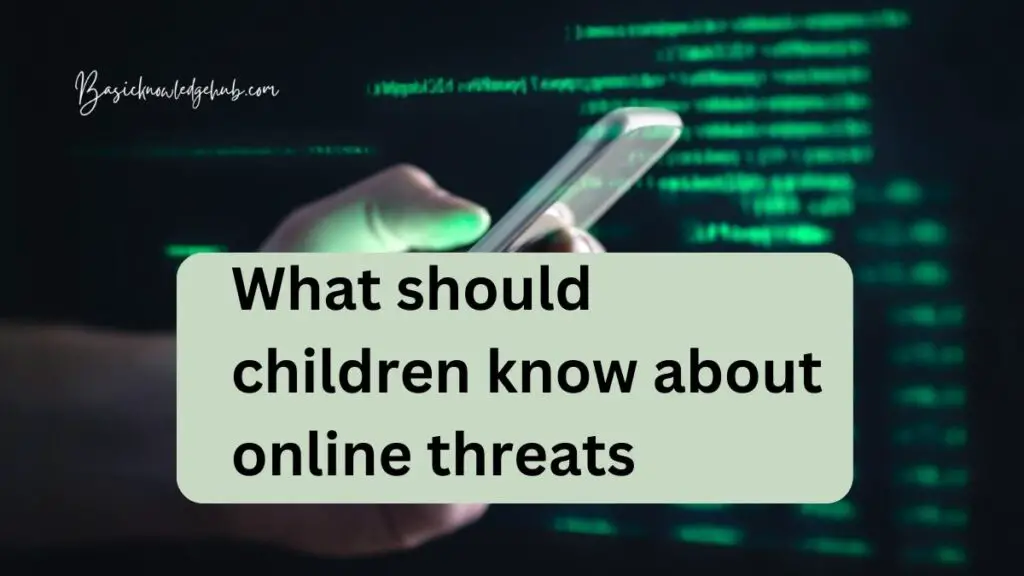What should children know about online threats
I still remember the first time my nine-year-old self logged onto the vast expanse of the internet, the glimmer of curiosity and excitement in my eyes. It felt like stepping into a new world, one filled with endless possibilities and uncharted territories. However, my parents were always cautious, knowing all too well the potential risks that lurked behind every corner. They made sure I was aware of the question, “What should children know about online threats?” as they wanted me to be safe and responsible in the digital world. As the internet evolves, so do its dangers, and it is imperative for children to be educated about the potential risks that come with being online.
In today’s interconnected world, where even the youngest of users have access to a wealth of information and social connections at their fingertips, it’s more important than ever to ensure their safety. From cyberbullying and phishing scams to predators and inappropriate content, the online landscape can be a treacherous place for unsuspecting youngsters. To help parents and guardians navigate the complexities of the digital realm and prepare their children for a safe online experience, we have compiled a comprehensive guide. With a focus on a balanced approach, we will explore the importance of understanding online threats, and how to effectively communicate with children about them. So, let’s dive in and discuss the crucial steps to take for safeguarding our little ones in the digital age.

The Importance of Educating Children About Online Threats
The first step in protecting children online is to help them understand the potential dangers they might face. By discussing the risks associated with internet usage, parents and guardians can empower their children to make informed decisions and avoid potential pitfalls. Some of the common online threats children may encounter include cyberbullying, phishing scams, and exposure to inappropriate content. By addressing these topics with an open and honest dialogue, families can foster a secure and responsible digital environment.
CyberGhost demonstrated in children’s safety guide the importance of educating both parents and kids about online risks. The guide highlights how the internet can be a valuable resource for learning and social development, but also emphasizes the potential dangers such as exposure to inappropriate content, cyberbullying, and predators. By providing essential tips and information for parents and children, CyberGhost encourages a proactive approach to online safety, ensuring that the digital world remains a secure and positive space for children to explore and connect.
Identifying Cyberbullying and Promoting Positive Online Behavior
One of the most prevalent online threats faced by children today is cyberbullying. This harmful behavior can take many forms, such as offensive messages, exclusion from online groups, and the spreading of false information. It’s essential for children to recognize the signs of cyberbullying and to understand that it is not acceptable. Parents and guardians can help by teaching their children to treat others with respect, report any instances of bullying, and seek support from trusted adults when needed.
The Dangers of Phishing Scams and How to Avoid Them
Phishing scams are deceptive attempts to gain personal information or access to sensitive accounts. These scams often come in the form of emails, text messages, or social media messages designed to trick recipients into clicking on malicious links or revealing their login credentials. To protect children from phishing scams, it’s essential to teach them never to share personal information online, to be cautious of unexpected messages, and to verify the legitimacy of any requests for information.
Monitoring and Limiting Exposure to Inappropriate Content
The internet is a vast repository of information, and not all of it is suitable for young eyes. Inappropriate content, such as explicit materials, graphic violence, or hate speech, can be distressing for children and may lead to harmful consequences. Parents and guardians can take steps to limit exposure to inappropriate content by using parental control software, setting up content filters, and regularly reviewing their children’s online activity.
Establishing Open Communication and Trust
Building trust and maintaining open lines of communication with children is crucial in ensuring their safety online. Encourage children to share their online experiences, both positive and negative, and offer guidance when necessary. By establishing a supportive environment, children will feel comfortable discussing any concerns or issues they may encounter in the digital realm.
Teaching Children About Online Privacy and Security
In addition to understanding the potential dangers of the internet, it’s vital for children to be aware of the importance of online privacy and security. Educate them about the potential risks of sharing personal information online, such as their full name, address, and school. Additionally, teach them the value of strong passwords, and encourage them to regularly update their login credentials.
Conclusion
In today’s digital age, it’s more important than ever for parents and guardians to be proactive in teaching their children about the potential dangers of the internet. By addressing online threats head-on and providing children with the tools and knowledge to navigate the digital world safely, families can foster a secure and responsible online environment. By following the steps outlined in this article, parents and guardians can ensure their children are well-prepared for the challenges and opportunities that the internet presents.

